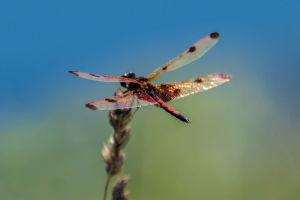Jellyfish Biology
Jellyfish, belonging to the phylum Cnidaria, are fascinating and ancient creatures of the ocean.
As vital components of marine ecosystems, jellyfish are intriguing not only biologically but also for their roles in the environment and human activities.
Jellyfish possess unique biological characteristics. Their bodies are composed mainly of water, accounting for over 95% of their weight, which makes them appear light and transparent in the water.
They exhibit a variety of shapes and sizes, typically consisting of a bell-shaped body (the medusa) and tentacles hanging down beneath it. These tentacles are lined with specialized cells called cnidocytes, which can release venom for capturing prey and for self-defense. Jellyfish primarily move by contracting and relaxing their bell, using this mechanism to propel themselves through the water efficiently.
The life cycle of jellyfish is equally remarkable, involving several distinct stages: egg, larva, polyp, and adult. Jellyfish reproduce in various ways; some species engage in two-parent reproduction, while others reproduce alone through budding. Under favorable environmental conditions, jellyfish populations can increase rapidly, forming large swarms, particularly in warm ocean waters.
Jellyfish play crucial roles in marine ecosystems. They serve as predators to a variety of marine organisms, including small fish and zooplankton, and are also an important food source for various marine animals, including certain fish species, sea turtles, seabirds, and other ocean predators.
Their impact on the marine food chain is significant, and in some cases, a surge in jellyfish populations can disrupt ecological balance. This is especially true when fish populations decline or when ecosystems are disturbed by human activities. Moreover, jellyfish can act as bioindicators for environmental monitoring. Scientists study their numbers and distribution to assess the health of marine ecosystems and to gain insights into broader environmental changes.
However, the presence of jellyfish also poses challenges for humans. In some regions, jellyfish populations have surged dramatically, leading to what is known as "jellyfish blooms." This phenomenon not only affects fishery resources but may also threaten marine transport and aquaculture operations.
For example, jellyfish tentacles can become entangled in fishing nets and vessels, resulting in lost catches and maritime accidents. Additionally, their stings can harm divers, swimmers, and those who engage in water sports, impacting recreational activities along coastlines.
In summary, jellyfish are important members of marine ecosystems, characterized by their unique biological features and life habits. They exert profound effects on the ecological environment. Future research should focus more on the interactions between jellyfish and other marine life, as well as the impacts of human activities on jellyfish populations and their habitats. Only in this way can we better understand and address this ancient and mysterious marine creature.


